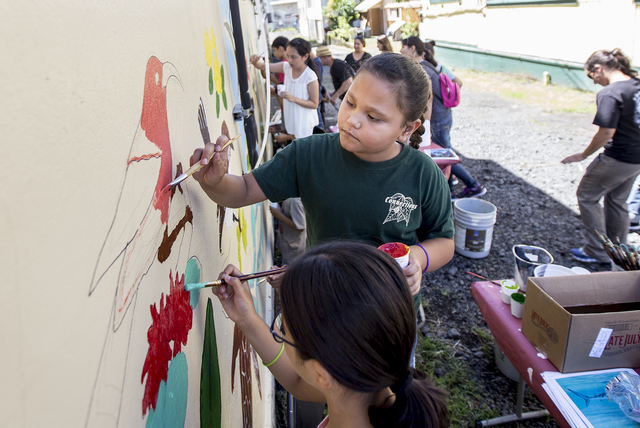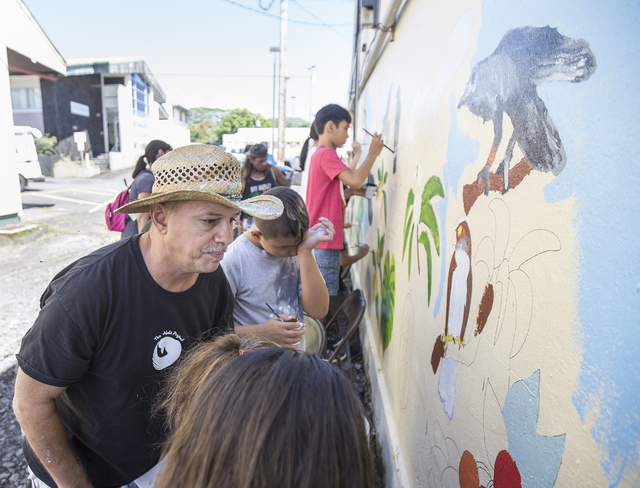Twenty inches long from bill to tail, with dark feathers and distinctive loud calls, the ‘alala is unlike any other Hawaii forest bird.
Twenty inches long from bill to tail, with dark feathers and distinctive loud calls, the ‘alala is unlike any other Hawaii forest bird.
It is the last remaining native corvid (member of the crow family) in the state, and has been extinct in the wild for more than a decade. But that will change later this fall, when a group of 12 captive-reared ‘alala is released into the Pu‘u Maka‘ala Natural Area Reserve.
More releases are planned to take place in the next five years as part of a collaborative effort between the state Department of Land and Natural Resource’s Division of Forestry and Wildlife, the U.S. Fish and Wildlife Service and the San Diego Zoo.
“It’s been such a long-term and large-scale conservation effort,” said ‘Alala Project coordinator Jackie Gaudioso-Levita. “We are extremely excited to see and hear ‘alala in the wild.”
As with other native bird species, ‘alala numbers dropped dramatically through the years because of threats such as predation and overgrazing of habitat. The population also took a considerable hit from diseases like avian malaria, avian pox and toxoplasmosis, which is carried by feral cats. The last wild pair of ‘alala was seen in South Kona in 2002.
The bird release was initially planned for mid-September, but has been moved two months down the road to November. Organizers needed more time to secure necessary permits and to prepare the ‘alala’s future habitat.
“It’s to make sure that every aspect of the project is completely ready to go,” Gaudioso-Levita said.
The birds will live in a large aviary at Pu‘u Maka‘ala for the first months, in order to adjust to their new environment.
The November release is not the first time reintroduction has been attempted.
Birds were first taken from the wild for captive breeding in the 1970s.
In the 1990s, a group of captive-raised birds was released in South Kona, but 21 of the 27 died because of predation and disease.
Part of the current release plan involves predator-aversion training, specifically regarding the ‘io, a native predator species. Researchers from the San Diego Zoo are teaching the chicks how to seek cover in the forest undergrowth.
The birds also are learning to eat a diet akin to what they’ll find in the wild. ‘Alala primarily eat fruit, and are important seed dispersers for native plants. They also eat insects and nectar.
The release project will cost $800,000 for the first year and between $400,000 and $500,000 after that. Funding comes from the San Diego Zoo as well as federal and state sources.
With the approach of the official release date, the ‘Alala Project has been increasing its community outreach efforts.
Outreach and education specialist Lea Ka‘aha‘aina gives public talks about the project around the island.
Ka‘aha‘aina also works with school groups, from elementary to university students, arranging field trips to the Keauhou Bird Conservation Center, where a portion of the breeding population lives (there are more than 115 ‘alala in all). Community groups also tour the facility.
“It really is great, because there’s no better way to make people fall in love with ‘alala,” Ka‘aha‘aina said. “They make quite an impression … they’re so playful when you watch them interact with each other; they’re so curious.”
The project group will have a booth at Saturday’s Hawaii Volcanoes National Park BioBlitz.
“That’s been a great venue for folks to learn and talk story,” Ka‘aha‘ainaa said.
During the summer, Ka‘aha‘aina worked with Kamehameha Schools’ summer program to integrate the release project into its curriculum. She is now working with fourth-graders, who are naming the birds that will be released into the wild.
“Those Hawaiian names carry a lot of hope and meaning for the birds,” Ka‘aha‘aina said.
On Wednesday, Oahu artist Patrick Ching began work on an ‘alala mural on the side of the Kress building. A group of fourth-grade students at Connections Public Charter School helped Ching with his work on Thursday.
“He loves to do community murals where he involves kids from local schools,” Gaudioso-Levita said.
The ‘alala working group hopes the new artwork will further help raise awareness, she said. A blessing of the mural will take place Sept. 1.
“I think people really like having a hopeful story,” Ka‘aha‘aina said. “With our project right now, we’re at a great turning point.”
Email Ivy Ashe at iashe@hawaiitribune-herald.com.




